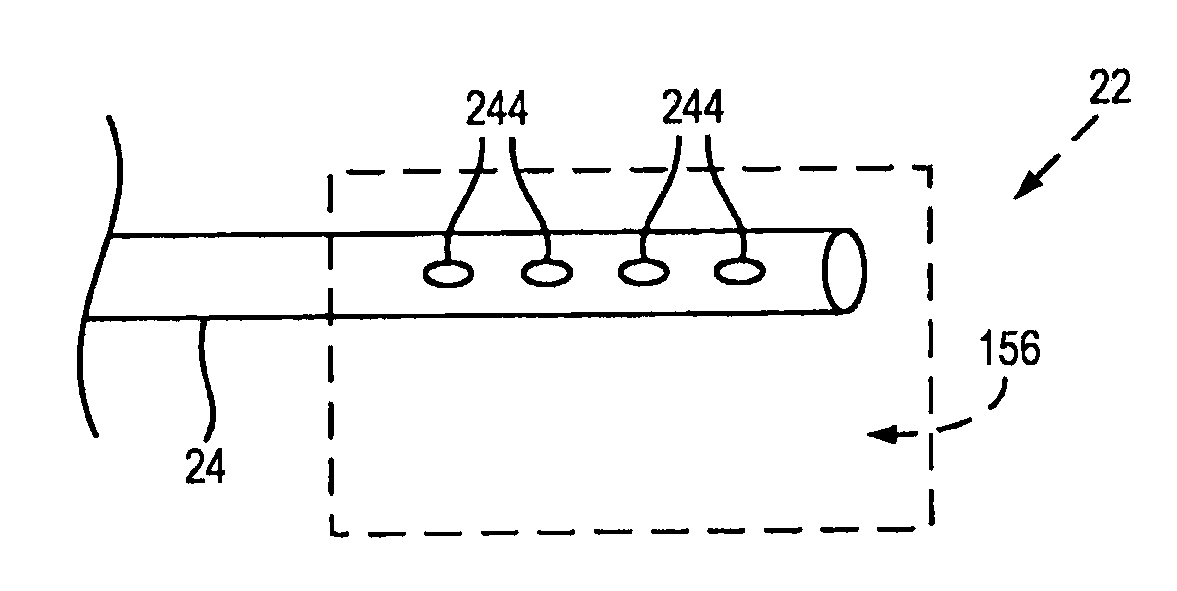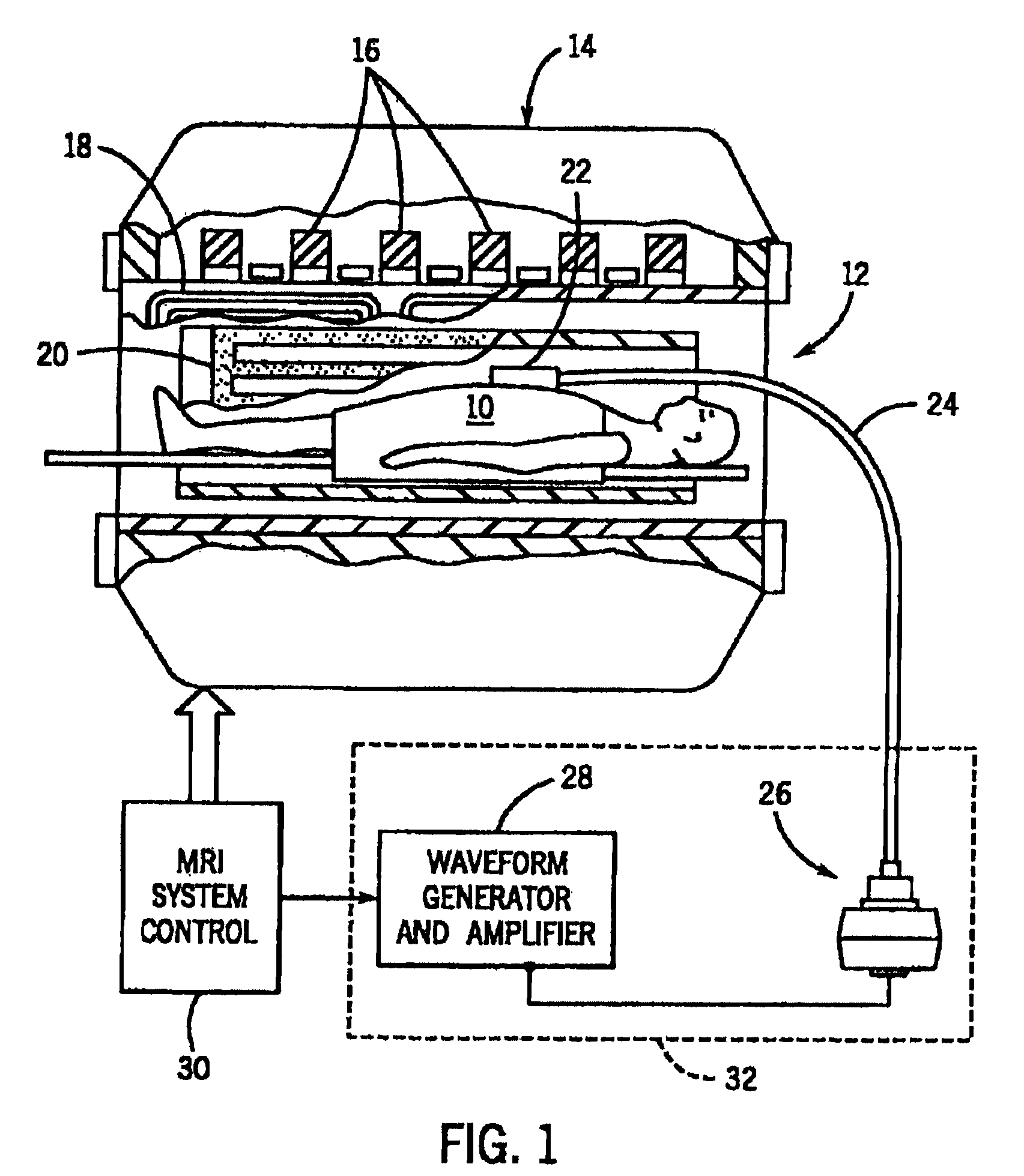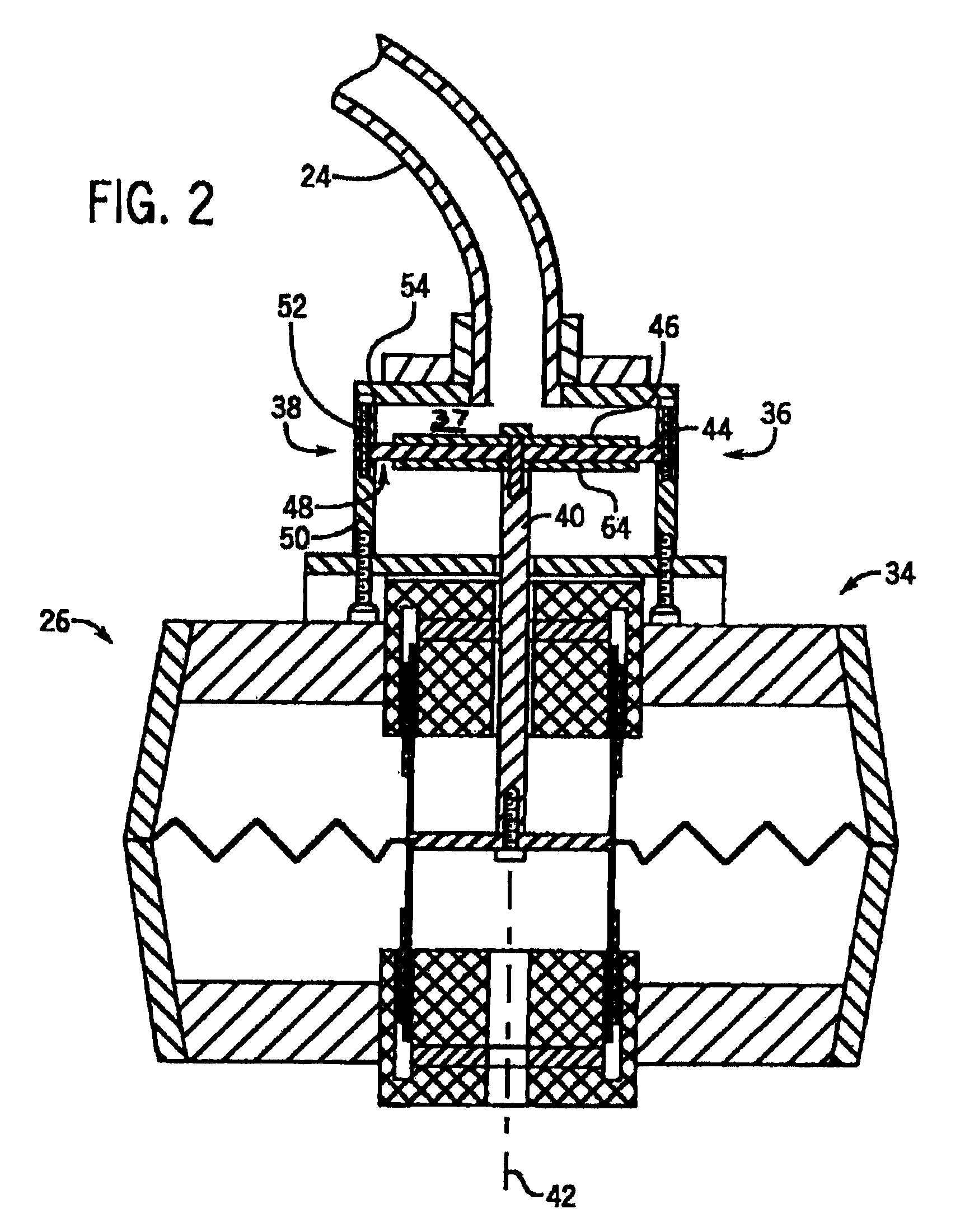Flexible passive acoustic driver for magnetic resonance elastography
a passive acoustic driver and magnetic resonance technology, applied in the field of devices for implementing magnetic resonance elastography, can solve the problems of many diseases that go undetected, valuable diagnostic tools are limited to those tissues and organs which the physician can prescribe, and many diseased internal organs go undiagnosed
- Summary
- Abstract
- Description
- Claims
- Application Information
AI Technical Summary
Benefits of technology
Problems solved by technology
Method used
Image
Examples
Embodiment Construction
[0022]The present invention is employed in a system such as that described in the previously-cited U.S. Pat. No. 5,592,085, which provides a means for measuring the strain in gyromagnetic materials, such as tissues, using MR methods and apparatus. The present invention may also be employed with other medical imaging modalities including, but not limited to, ultrasound. Referring to FIG. 1, a subject to be examined 10 is placed in the bore 12 of an MRI system magnet 14 and is subjected to magnetic fields produced by a polarizing coil 16, gradient coils 18 and an RF coil 20 during the acquisition of MR data from a region of interest in the subject 10. The homogeneity of these magnetic fields is important and any objects placed in the bore 12 must be carefully constructed of materials that will not perturb them.
[0023]The present invention is a passive driver system that may be placed on the subject 10 and energized to produce an oscillating, or vibratory, stress. It includes a passive ...
PUM
 Login to View More
Login to View More Abstract
Description
Claims
Application Information
 Login to View More
Login to View More - R&D
- Intellectual Property
- Life Sciences
- Materials
- Tech Scout
- Unparalleled Data Quality
- Higher Quality Content
- 60% Fewer Hallucinations
Browse by: Latest US Patents, China's latest patents, Technical Efficacy Thesaurus, Application Domain, Technology Topic, Popular Technical Reports.
© 2025 PatSnap. All rights reserved.Legal|Privacy policy|Modern Slavery Act Transparency Statement|Sitemap|About US| Contact US: help@patsnap.com



